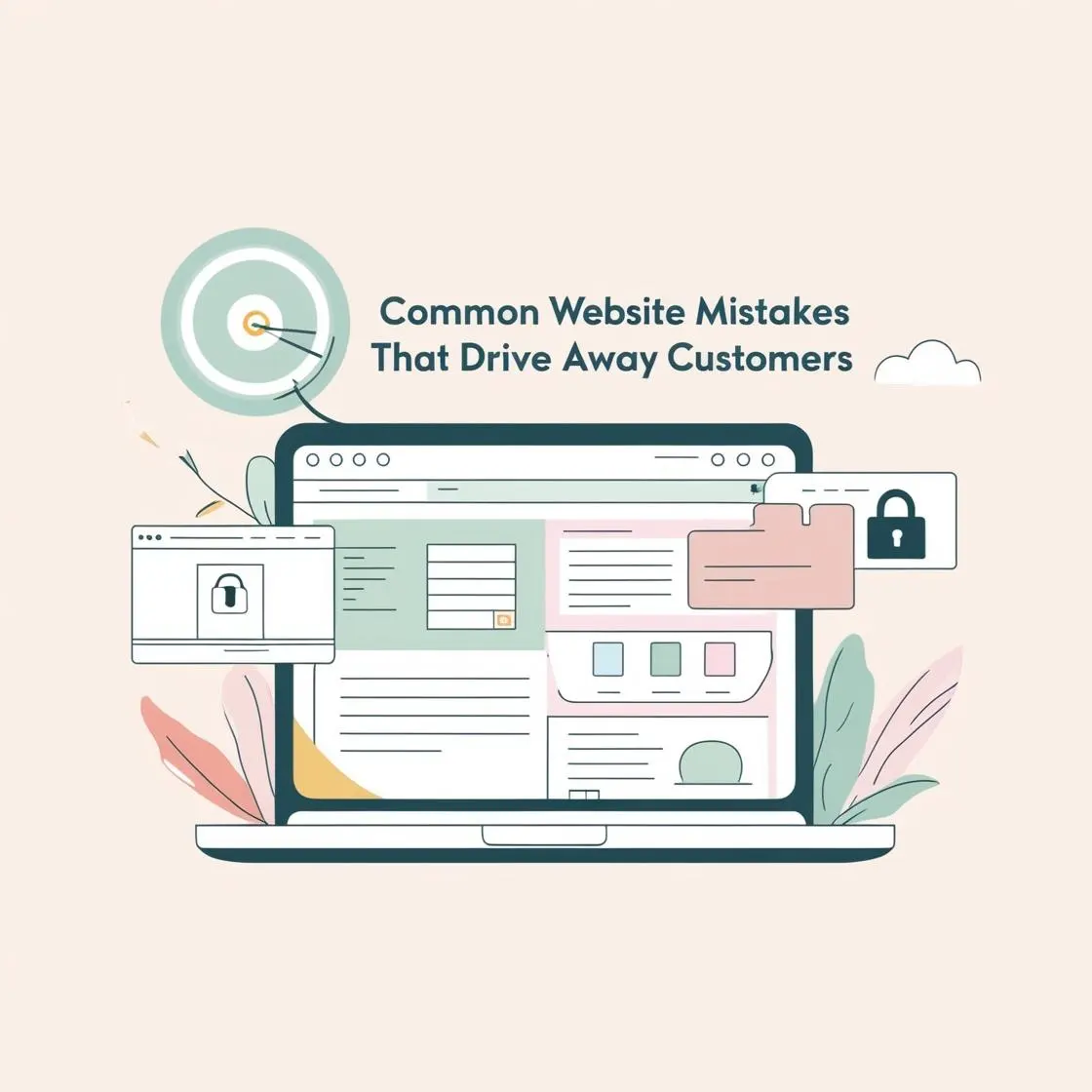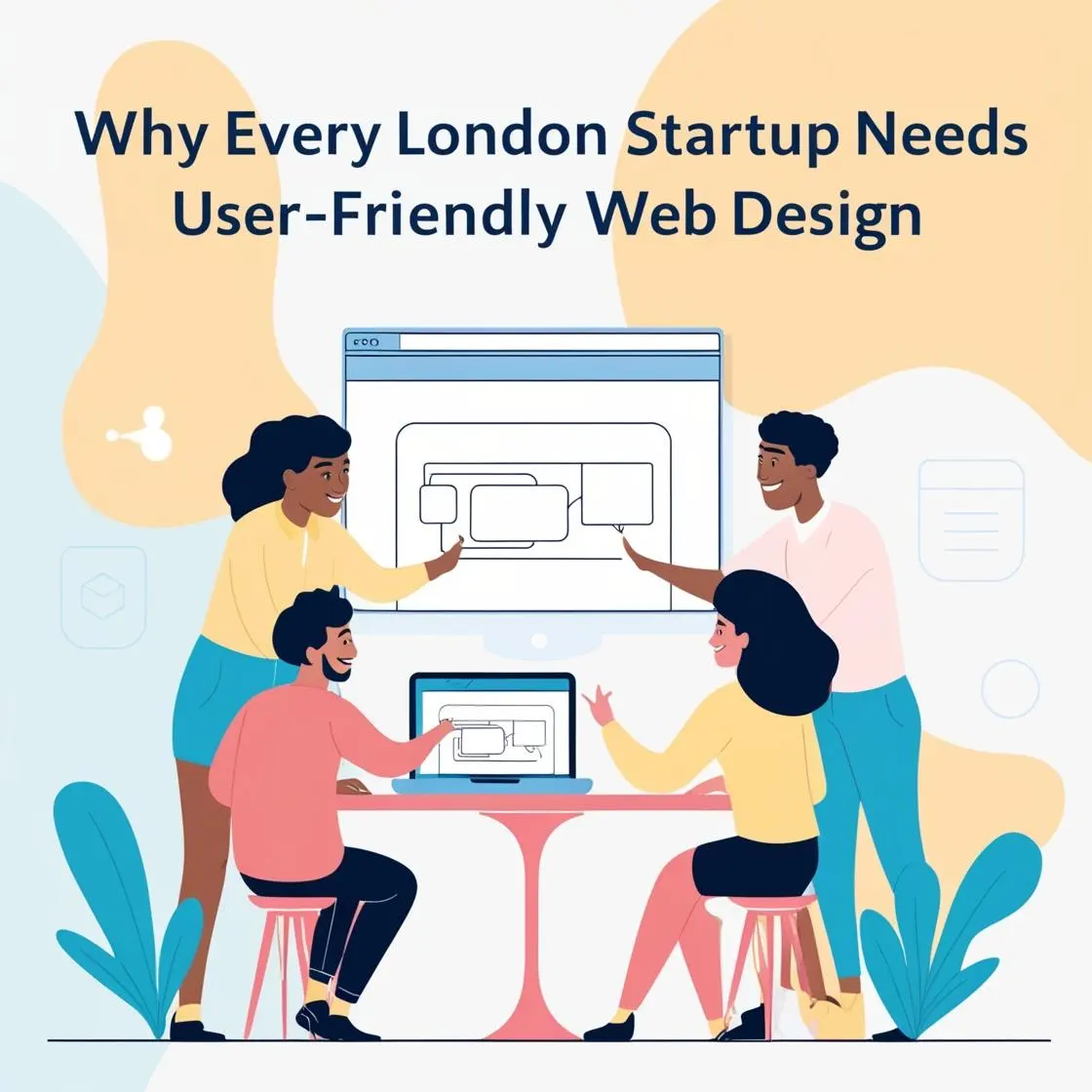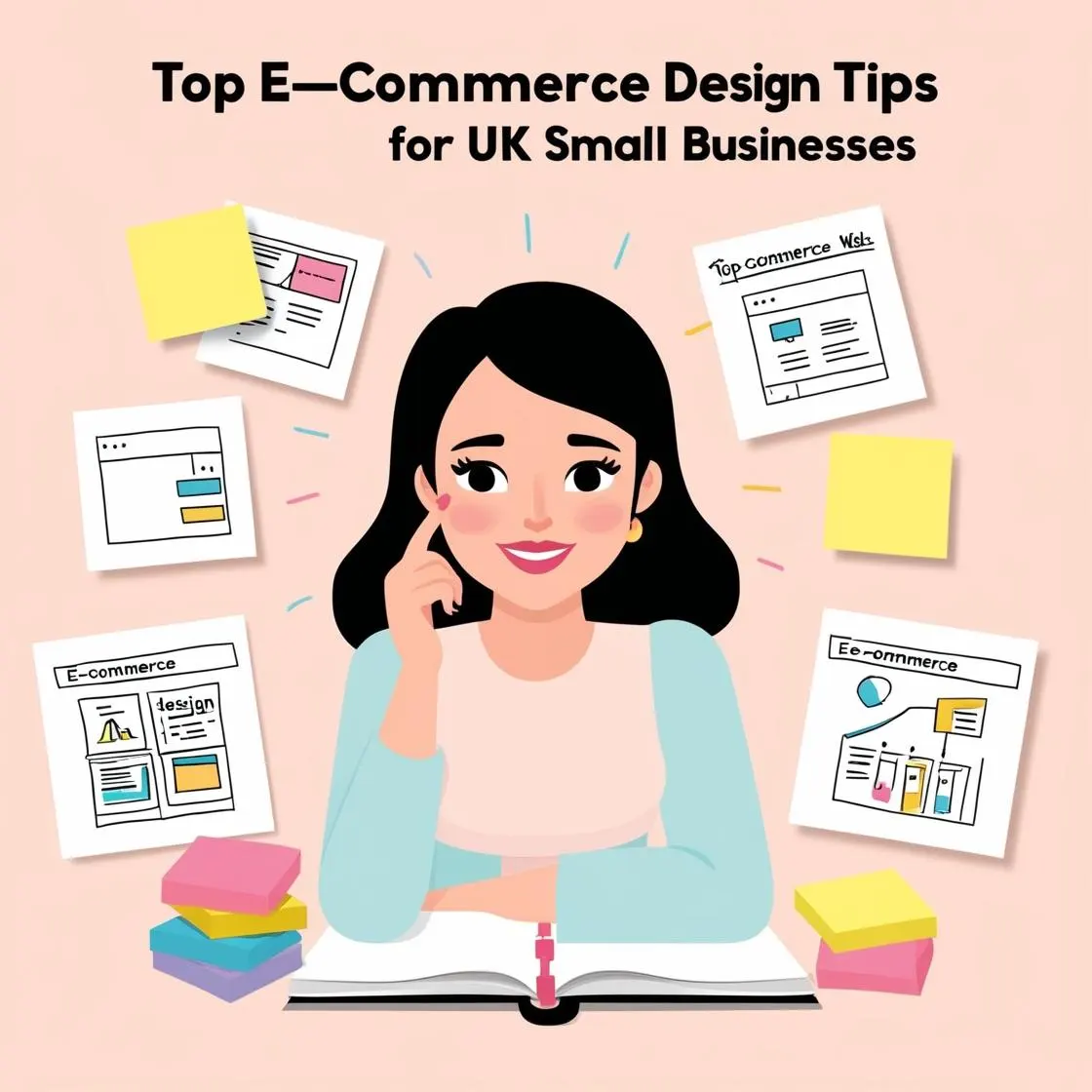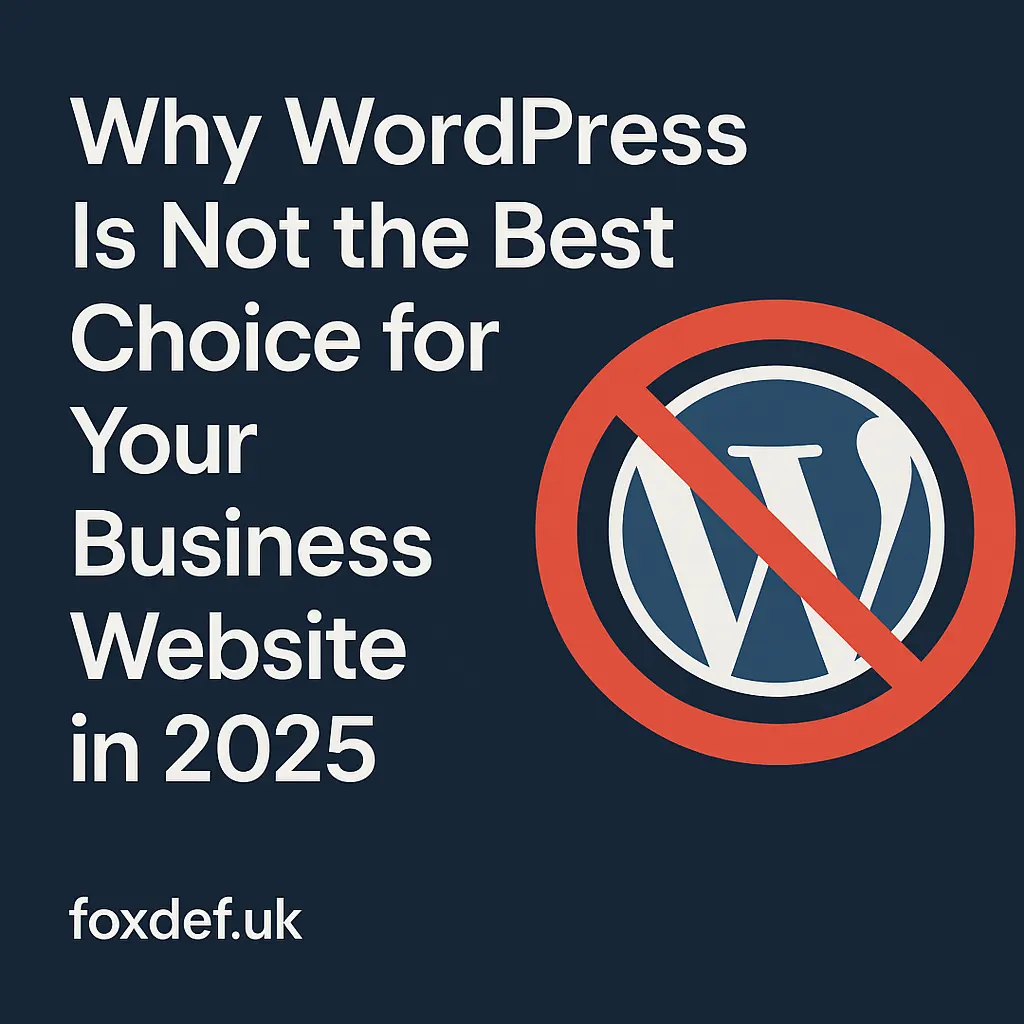
Common Website Mistakes That Drive Away Customers
There are over 1.13 billion websites online, so people have a plethora of options when it comes to purchasing products or getting information. However, websites are also prone to many different mistakes that could end up driving customers away.
In this article, we will focus on what website mistakes you want to avoid, or how to rectify them if you have already made those mistakes!
No mobile optimization
According to research from SOAX, around 62.69% of the internet traffic comes from mobile phones, tablets, and mobile devices in general.
A lack of mobile optimization leads to you losing a huge amount of potential customers.
That's why it's crucial to have either a mobile version of the website or, even better, a responsive website design.
Responsive designs are great because they adapt to the device's resolution.
That way, you have a native experience regardless of what device you might be using.
Slow loading speeds
A regular website takes around 1.3 seconds to load, on average. It's very important to ensure that customers can easily visit your website and not wait multiple seconds until they can access your content.
A single second of delay lowers page views by around 11%.
Plus, few people wait more than 3 seconds for a website to load.
If it doesn't load, they will move on to the next search engine result.
You're definitely losing clients if you have a slow loading speed, so it's crucial to speed up your website as much as possible.
Lackluster, old-fashioned website design
Outdated designs could deter people from visiting your website.
That might signal to clients you're not investing a lot of time and effort into your website, which could mean the same for your business as a
whole.
It's a good idea to:
- Use modern fonts and colors.
- Avoid having light colored backgrounds and light texts; the same thing is valid for darker backgrounds, you want to stay away
from dark texts. - Learn more about color combinations and ensure that you avoid any bad color combinations that could prove to be unappealing or make things hard to read.
- Try to include accessibility options.
Think about colorblind customers, or those who have disabilities.
Not only will you comply with requirements from international bodies like ADA, but it also makes it easier for those customers to access your website and its content.
Endless scrolling
It's a very common mistake that a lot of website owners make, and it's a good idea to avoid it.
Generally, 55% of visitors spend around 15 seconds on a website before moving to something else.
That's why it's important to make a great first impression. A good idea is to have most of the relevant info above the fold, so people won't scroll at all.
Or, at most, you want them to scroll just a little bit.
If people need to scroll multiple times to access the info they need, that deters them from browsing the website.
Simple, seamless navigation is what you always want to strive towards.
Not only will it make things easier, but it will also ensure that people have a great experience with your website!
Too many/no calls to action
A call to action is crucial for any website because it guides people towards generating a sale or just doing something that helps your business.
Having no call to action can make people clueless in regards to what you want them to do next.
At the same time, having too many calls to action can bring in a lot of confusion.
Normally, having 1-2 calls to action at most will streamline this process.
It becomes easier to guide website visitors and let them know what you want them to do.
Chasing trends and using cheesy sales lingo
There's no denying that audiences these days are very smart and they know what they want.
That's why chasing trends or using cheesy sales lingo doesn't work.
You need to study your audience, create targeted campaigns, and focus on their wants and needs.
Using any sales lingo that's very common and not targeted towards your client base will be a waste of time.
Make sure that you have a professional approach and fulfill the client's requirements.
Chasing trends and sticking to general sales lingo will not bring you great results, so that's something you want to avoid.
Very complex navigation
As we mentioned earlier, when you present your website to customers, you want to ensure that it's very intuitive.
Complicated menus, tons of submenus, all of those will just end up making your website hard to work on.
What you want to do is to maintain a simple, minimalist navigation system.
If you do that, it's easier for people to understand the menus and figure out where they want to go.
Too much complexity can be problematic, and that's certainly something to keep in mind.
Another problem comes from the page's structure.
If you don't have any headings, bullet points, or things to break up the content, that will lead to a lot of clutter.
Or, as we said, it's imperative to keep things simple and streamlined.
If you do that, it will lead to a much better browsing experience for customers.
Plus, it shows a sign of professionalism as well.
Overwhelming forms
Forms need to be strict and to the point.
Just like your website design, if they are too complex, people might end up not completing them anymore.
The best approach here is to always ask only for essential information.
If you need to have a longer form, try to break it into multiple steps.
Use progress indicators to make navigation a lot easier.
Inline validation can also help because it allows users to identify errors and correct them quickly.
Broken links
As time goes by, some of the links on your website might not be working anymore.
A good idea to avoid such a thing is to check links at least once a year.
That way, if there are broken links, you can replace them with something else.
Broken links are bad for your SEO performance, so it's crucial to identify and solve that problem as quickly as possible.
Too many pop-ups
One of the things that most people have to see on a website is a large number of pop-ups.
Having stuff that randomly appears out of nowhere can make the user experience less appealing, and it could lead to frustration or annoyance.
People want to see as few pop-ups as possible, or maybe even none at all.
Sure, these can be effective for stuff such as lead capturing, but they will lessen the user's experience, and that's a problem you want to avoid.
Branding inconsistencies
It's very important to have the same imagery, fonts, colors, and logos on your website.
Staying consistent is crucial here; otherwise, it weakens the brand's legitimacy and recognition.
You want to establish and adhere to brand guidelines.
Enforce those guidelines for the entire website, as that will help provide a much better result!
Other mistakes to avoid
- Not having a secure website can be problematic, since browsers might even lock access to it.
That's why having an SSL certificate is important, so your website uses HTTPS. - Make sure that you avoid adding any autoplay for media.
Obviously, this annoys users because no one wants to enter a website to have it play music or random content automatically without their consent. - Not having a search functionality is certainly a missed opportunity.
- Make sure that you avoid having too many ads, as they're distracting and might deter people from browsing the website.
- If you have any purchasing options on the site, make sure that the checkout process is simple.
Like navigation, if it's too complex, people might stop purchasing your products.
Conclusion
It's extremely important to avoid website mistakes that could end up costing you potential sales.
These mistakes shown above are quite common, and many website owners had to deal with them.
Make sure that you avoid them and focus on streamlining the user experience.
Everything from speeding up your website to keeping a simple navigation process, all of that can help improve the way people interact with your website. Use these tips, and you won't have a problem improving your website's growth if you follow them appropriately!
Also check out

Why Every London Startup Needs User-Friendly Web Design
Discover how user-friendly web design in London helps startups stand out, engage customers and climb the Google rankings.

Top E-Commerce Design Tips for UK Small Businesses
Discover how user-friendly web design in London helps startups stand out, engage customers and climb the Google rankings.

Is WordPress Right for Your Business?
WordPress powers over 40% of the web—but that doesn’t mean it’s the right choice for your business.